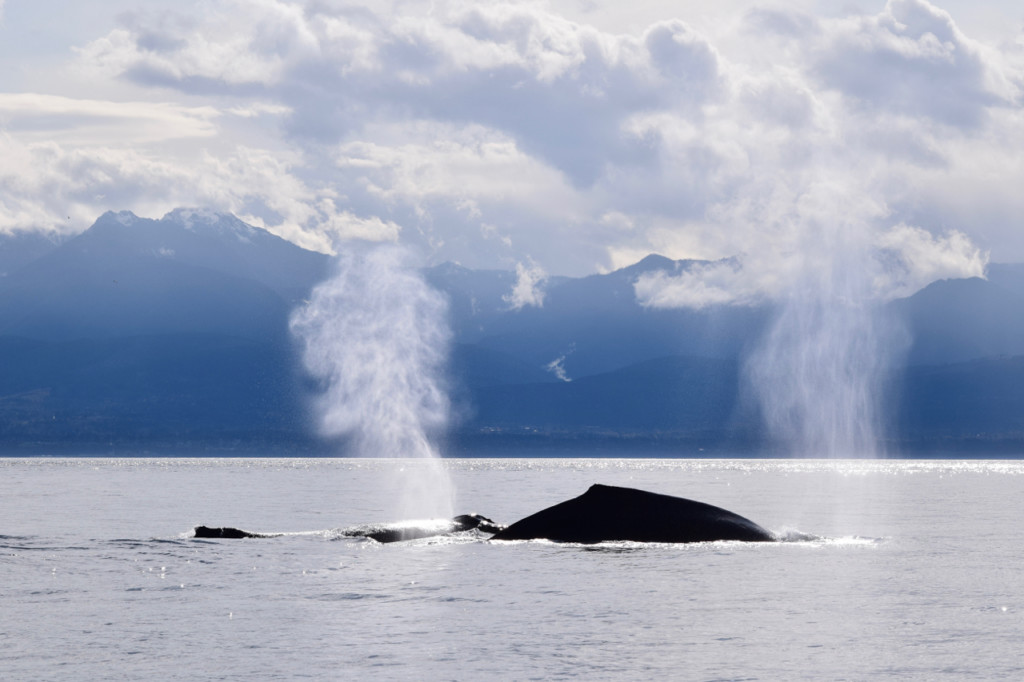How long can a whale hold its breath?
Who holds the record?
A Cuvier’s Beaked Whale holds the current record for the longest dive standing at a whopping 138 minute long dive. This was recorded back in 2014 and broke the record for diving mammals. That’s the equivalent of holding your breath while watching Star Wars: The Force Awakens…
This takes them down about 2000 meters below the waters surface.
Comparatively, the longest breath held by a human underwater is 22 minutes and 22 seconds recorded in 2012 and, held by German free-diver Tom Sieta.

What about other whales?
Sperm whales are well known for being the deep diving whales, they travel to depths of over 1000 meters to reach their prey of giant squid. They are able to hold their breath for an impressive 90 minutes.
The whales we see in our waters don’t hold their breath for quite as long as this.
Humpback whales have been known to hold their breath for up to an hour-but we are sure glad they don’t this very often! On average we find on our tours that a Humpback will go down for a dive ranging between 4-7 minutes and then come up again for about 6-8 breaths and repeat the process.
Killer Whales don’t hold there breath for anywhere near as long. Their maximum is about 15 minuets but on average we see them surface at least once a minute while moving quickly or every 3-5 minutes when travelling.

How can they hold their breath for so long?
You might be quick to say ” It’s because they have bigger lungs, right?” but, in most cases this isn’t strictly true. While obviously their lungs are bigger than ours, their lung to body size ratio is the same if not smaller and that’s the important part to remember.
So how do they do it?!
To start they have a very efficient respiratory system. Whales exhale first, getting rid of all the stale air in their lungs before taking in a fresh, clean breath. Humans, on the other hand, breathe in first and then exhale, leaving a lot of stale air in our lungs.
For perspective, humans only absorb 5% of the oxygen in a single breath. Compare this to a whale who can absorb as much as 90% of the oxygen in each breath. This means that a whale acquires much more oxygen than a human in a single breath to start with.

The oxygen is taken in quickly, attaches itself to the high levels of hemoglobin found in the blood, of which whales have twice the number we do and also to the myoglobin found in muscles, whales having 30% more of these proteins in their bodies as human.
Then, right before diving, these mammals exhale 90% of the air in their lungs. This reduces their buoyancy, making it easier to dive. As the animals is less buoyant and there for more “heavy” the animal doesn’t need to swim down as they can simply sink. This sinking means less movement and therefore less oxygen use.
Additionally, to stop using so much oxygen, diving mammals can shunt blood flow from their extremities and push it to the brain, heart, and muscles. They also shut down digestion to lesser organs; kidney and liver function.
Finally, they lower their heart rate. Most mammals can do this when they dive, even humans. But in marine mammals the slowdown can be extreme. Scientists have measured the heart rate of diving Weddell seals at a mere four beats per minute.

Izzy David
Onboard Naturalist/Biologist for SpringTide Whale Watching & Eco Tours

